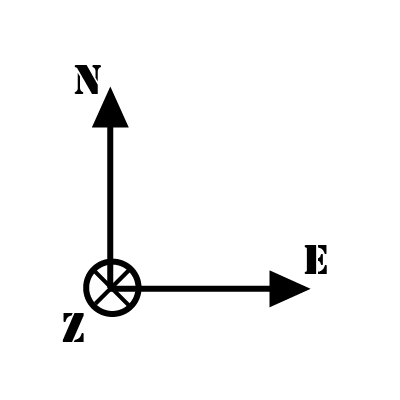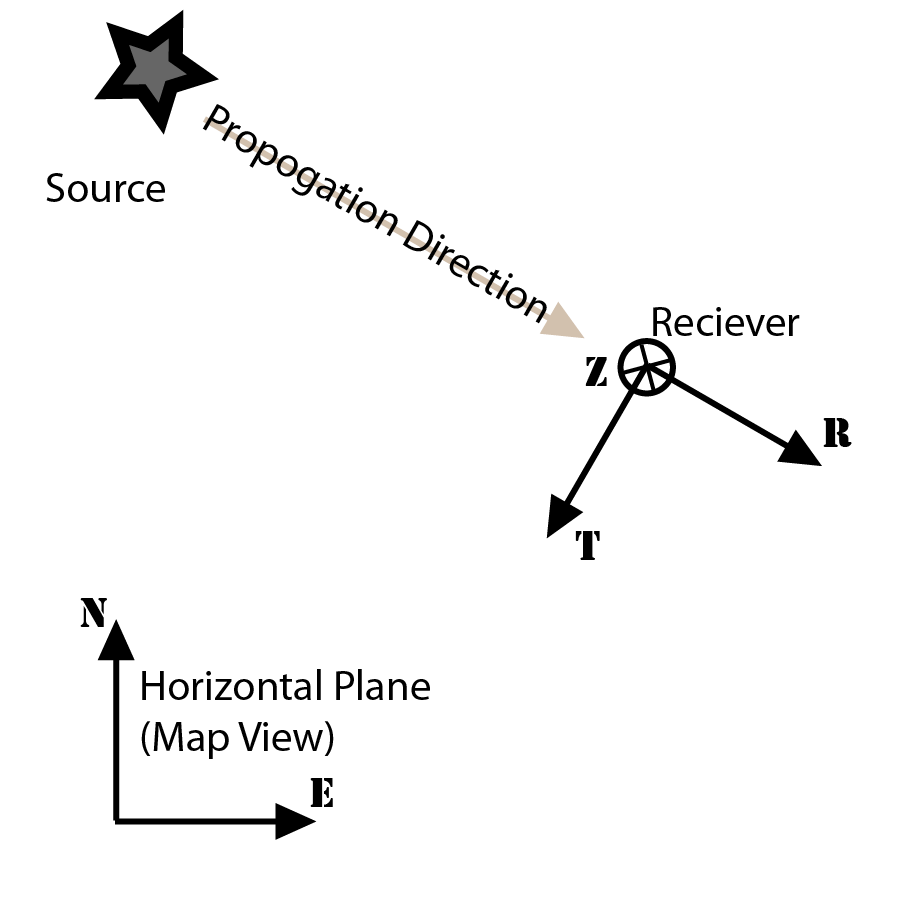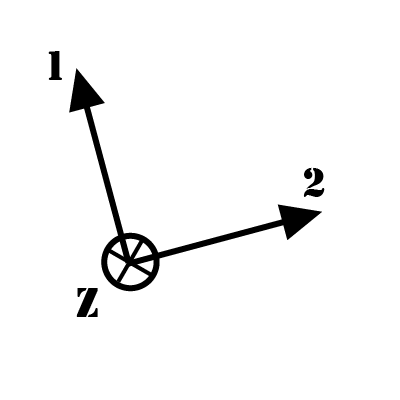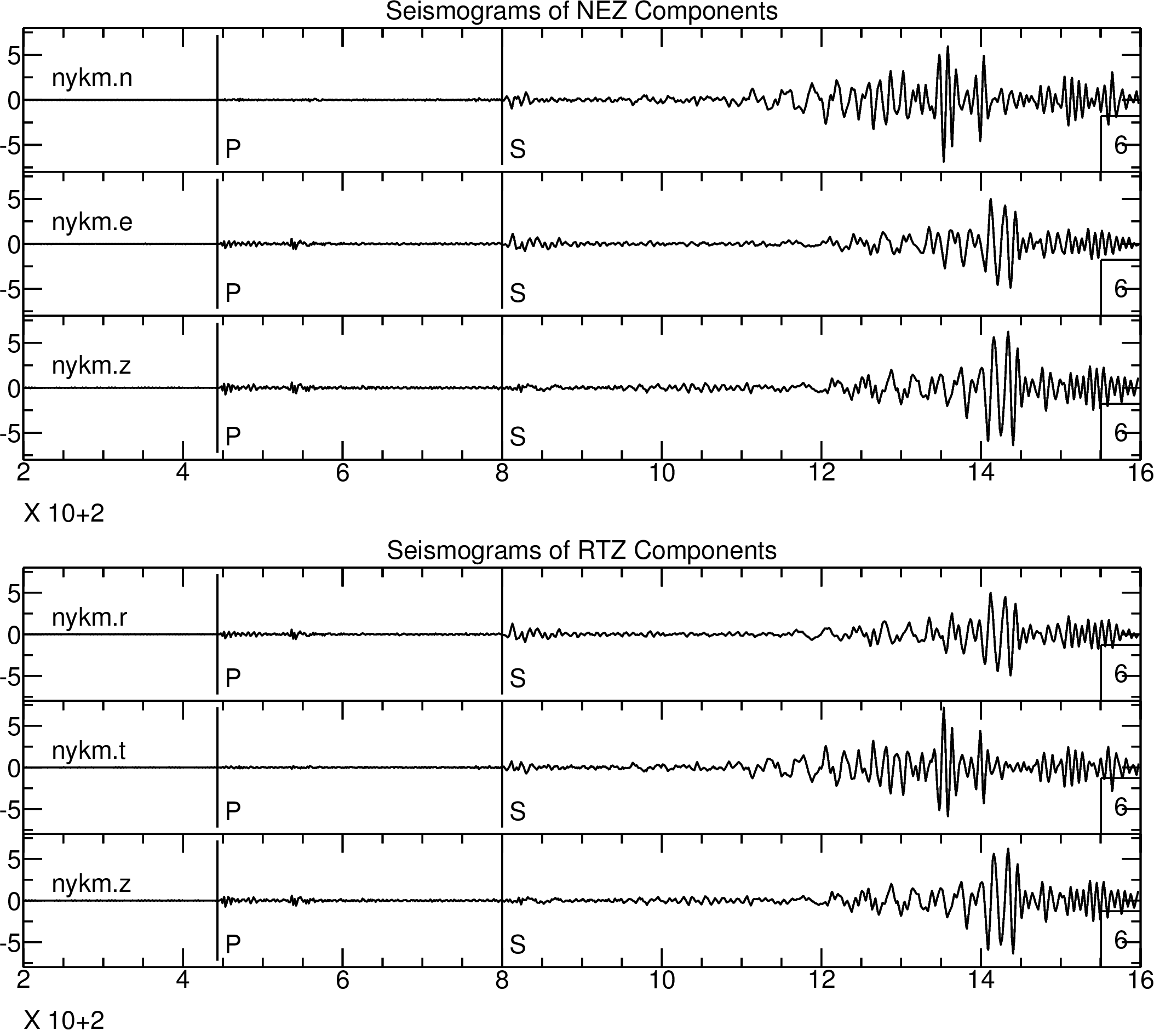Coordinate Systems¶
The ground motion can be described quantitatively as displacement, velocity or acceleration, which is a vector. Modern seismometers include three separate channels, which can record the simultaneous movement in three orthogonal directions, e.g., North, East and vertical Upward (NEZ).
NEZ Coordinate System¶
NEZ coordinate system is the most commonly used coordinate system
N: north is positive, south is negativeE: east is positive, west is negativeZ: vertical upward is positive, vertical downward is negative

NEZ coordinate system (From https://service.iris.edu/irisws/rotation/docs/1/help/)¶
RTZ Coordinate System¶
In real researches, we usually rotate the raw three component data from NEZ system to RTZ system. The RTZ system is a coordinate system defined by locations of earthquakes and stations, which varies for different earthquake-station pairs.
R: pointing from the earthquake location to the station locationZ: vertical upwardT: perpendicular to the plane of Z and R direction. The choice of T direction makes the RTZ coordinate system a left-handed system.

RTZ coordinate system (From https://service.iris.edu/irisws/rotation/docs/1/help/)¶
12Z Coordinate System¶
Sometimes, the two horizontal components may be not aligned with North and East. The arbitrary orientations have been assigned components of 1 & 2. The third component should still be vertical upward.

12Z coordinate system (From https://service.iris.edu/irisws/rotation/docs/1/help/)¶
Component Rotation¶
IRISWS Rotation: https://service.iris.edu/irisws/rotation/docs/1/help/
SAC rotate: https://seisman.github.io/SAC_Docs_zh/data-process/rotate/
We can rotate seismic waveform in one coordinate system to anther one so that we can better analyize the data.
Here is an example of rotating seismic data in NEZ to RTZ. We can see noticeable P waves in R and Z components and S waves in all three components. We can also see noticeable Love wave in T component and Rayleigh wave in R and Z components.

Rotation from NEZ to RTZ (From https://seisman.github.io/SAC_Docs_zh/data-process/rotate/)¶